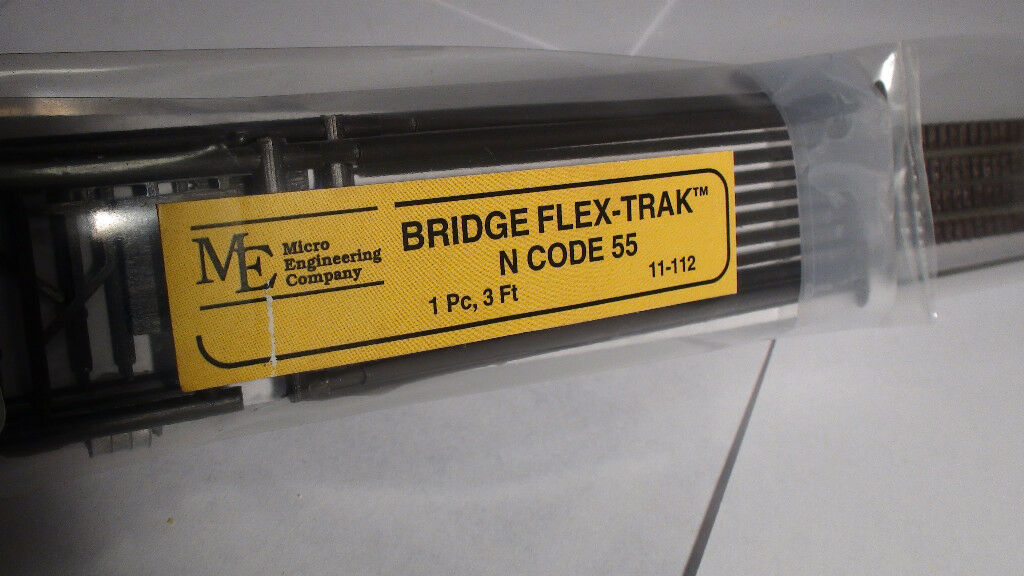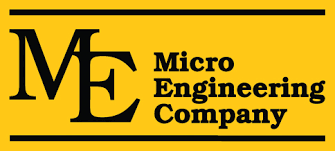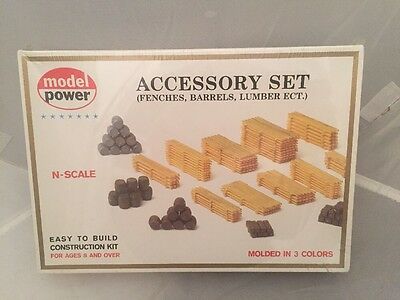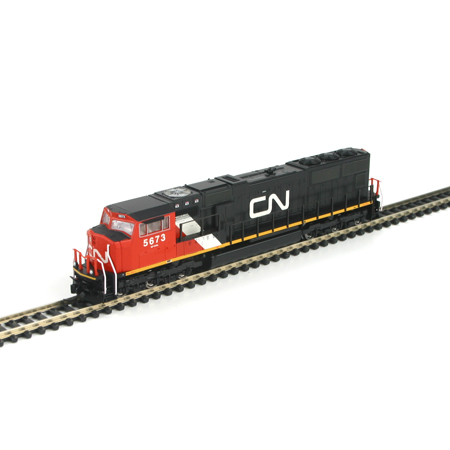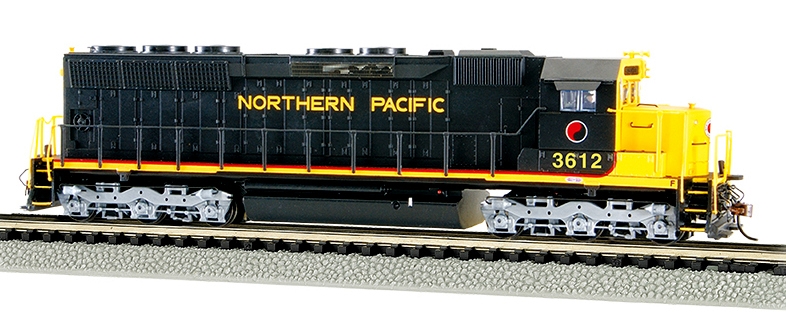Specific Item Information: Includes 2 guard rails, 2 guard timbers & 4 barrel platforms with barrels.
Road Name History:  Can't have model trains without track can we? The track on a railway or railroad, also known as the permanent way, is the structure consisting of the rails, fasteners, railroad ties (sleepers, British English) and ballast (or slab track), plus the underlying subgrade. It enables trains to move by providing a dependable surface for their wheels to roll upon. For clarity it is often referred to as railway track (British English and UIC terminology) or railroad track (predominantly in the United States). Tracks where electric trains or electric trams run are equipped with an electrification system such as an overhead electrical power line or an additional electrified rail.
Text and Images From Wikipedia
Can't have model trains without track can we? The track on a railway or railroad, also known as the permanent way, is the structure consisting of the rails, fasteners, railroad ties (sleepers, British English) and ballast (or slab track), plus the underlying subgrade. It enables trains to move by providing a dependable surface for their wheels to roll upon. For clarity it is often referred to as railway track (British English and UIC terminology) or railroad track (predominantly in the United States). Tracks where electric trains or electric trams run are equipped with an electrification system such as an overhead electrical power line or an additional electrified rail.
Text and Images From Wikipedia
Rail codes:
The code refers to the actual height of the rail. The followings heights are used for N-scale:
- Code 80 = 0.080" tall or about 13" N scale height - the mostly used for sectional tracks.
- Code 70 = 0.070" tall or about 11" N scale height
- Code 55 = 0.055" tall or about 9" N scale height - the mostly used by modelers wishing a realistic effect for their layout. Can be used with all modern rolling stock (low flange wheels).
- Code 40 = 0.040" tall or about 6" N scale height
Turnout codes:
The turnout number describes the length needed for the diverging track to be 1 foot apart from the straight one . So the lower the number, the sharper the curve, and the higher the number, the more gradual curve on the diverging track.
- In a #4 turnout, the rails are 1 foot apart at a distance 4 feet beyond the frog
- In a #6 turnout, the rails are 1 foot apart at a distance 6 feet beyond the frog
- In a #8 turnout, the rails are 1 foot apart at a distance 8 feet beyond the frog
Note that European brands such as Minitrix or Fleischmann use a different notation for turnouts and refer to the radius of the curvature of the diverging track.

Rail codes:
The code refers to the actual height of the rail. The followings heights are used for N-scale:
- Code 80 = 0.080" tall or about 13" N scale height - the mostly used for sectional tracks.
- Code 70 = 0.070" tall or about 11" N scale height
- Code 55 = 0.055" tall or about 9" N scale height - the mostly used by modelers wishing a realistic effect for their layout. Can be used with all modern rolling stock (low flange wheels).
- Code 40 = 0.040" tall or about 6" N scale height
Turnout codes:
The turnout number describes the length needed for the diverging track to be 1 foot apart from the straight one . So the lower the number, the sharper the curve, and the higher the number, the more gradual curve on the diverging track.
- In a #4 turnout, the rails are 1 foot apart at a distance 4 feet beyond the frog
- In a #6 turnout, the rails are 1 foot apart at a distance 6 feet beyond the frog
- In a #8 turnout, the rails are 1 foot apart at a distance 8 feet beyond the frog
Note that European brands such as Minitrix or Fleischmann use a different notation for turnouts and refer to the radius of the curvature of the diverging track.
Brand/Importer Information: Micro Engineering, Inc. was started in 1964 by Robert Rands under the original name of Rail Craft Products. The business developed from his hobby and love of model railroading. Bob saw that a more prototypical rail size was needed in HOn3 narrow gauge to represent 75 pound prototype rail. He designed and had manufactured the new model size of Code 55 rail. This became the first product offering of Rail Craft. More rail sizes were added to the line followed by the popular line of Flex-Trak in many different scales and rail sizes. As the product line diversified, the company changed its name to Micro Engineering.
Bob's son Ron joined the company in 1972 and another son Richard joined in 1981. Richard left the company in 1997 to pursue other business opportunities but the many products he developed are still a part of the Micro Engineering line.
In 1984 the company moved into a 4,000 square foot building which allowed the purchase of the injection molding machine and tooling from which the Flex-Trak was manufactured. Additional molding machines, CNC milling machines and other equipment for a tool and die shop where purchased for development and manufacture of new products.
Today in 2014, Micro Engineering / Rail Craft celebrates its 50th year in business. The company is still operated with the same enthusiasm that Bob Rands brought to Rail Craft Products 50 years ago.
Bob's son Ron joined the company in 1972 and another son Richard joined in 1981. Richard left the company in 1997 to pursue other business opportunities but the many products he developed are still a part of the Micro Engineering line.
In 1984 the company moved into a 4,000 square foot building which allowed the purchase of the injection molding machine and tooling from which the Flex-Trak was manufactured. Additional molding machines, CNC milling machines and other equipment for a tool and die shop where purchased for development and manufacture of new products.
Today in 2014, Micro Engineering / Rail Craft celebrates its 50th year in business. The company is still operated with the same enthusiasm that Bob Rands brought to Rail Craft Products 50 years ago.
Manufacturer Information: Address:
1120 Eagle Road
Fenton, MO 63026
Phone:
800-462-6975
636-349-1112
Item created by: nscalestation on 2017-12-08 20:15:13
If you see errors or missing data in this entry, please feel free to log in and edit it. Anyone with a Gmail account can log in instantly.
If you see errors or missing data in this entry, please feel free to log in and edit it. Anyone with a Gmail account can log in instantly.


